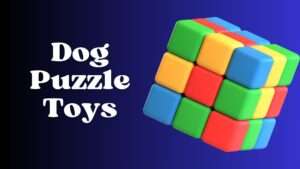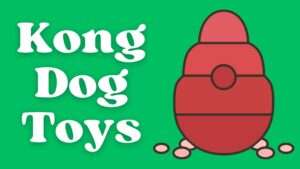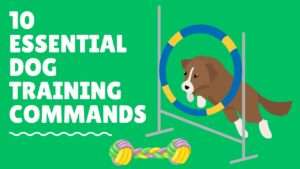Are you looking for a way to stimulate your dog’s mind and encourage natural foraging behaviors? Enter interactive feeding devices for dogs! These innovative tools offer more than just a meal; they provide mental and physical stimulation, promote slower eating, and can even help reduce behavior problems. But with so many options on the market, how do you know which one is right for your furry friend? In this complete guide, we’ll explore everything you need to know about dog interactive feeding devices, from their benefits to different types and how to choose the perfect one for your pup.
Contents Overview
Benefits of Interactive Feeding Devices
Interactive feeding devices offer a range of benefits for both dogs and their owners. Here’s why they’re worth considering:
- Mental Stimulation: Engages your dog’s mind by requiring problem-solving skills to access food, preventing boredom and promoting cognitive development.
- Slow Feeding: Encourages slower eating, which can aid digestion, reduce the risk of bloat, and prevent gulping, choking, and regurgitation.
- Weight Management: Helps control portion sizes and prevents overeating, making it an excellent tool for dogs prone to obesity.
- Behavior Modification: Can reduce destructive behaviors and separation anxiety by providing a positive outlet for excess energy.
- Bonding Opportunity: Fosters a stronger bond between you and your dog as you work together to solve feeding puzzles.
Types of Interactive Feeding Devices
Interactive feeding devices come in various shapes, sizes, and complexities, each designed to engage your dog’s mind and encourage natural foraging behaviors. Let’s explore the different types in detail:
- Puzzle Feeders:
- Description: Puzzle feeders are devices that require your dog to manipulate parts or solve puzzles to access the food hidden inside. They often feature compartments, sliders, or movable parts that your dog must interact with to reveal the treats.
- Benefits: Provides mental stimulation by engaging your dog’s problem-solving skills. Encourages slow feeding and prevents gulping or overeating.
- Variations: Puzzle feeders come in different designs, including mazes, spinners, and treat-dispensing balls. Some have adjustable difficulty levels to cater to dogs of various skill levels.
- Snuffle Mats:
- Description: Snuffle mats consist of fabric strips or fleece tied together to create a textured surface. You scatter kibble or treats among the strands, and your dog uses their nose to sniff out the food.
- Benefits: Mimics natural foraging behaviors and stimulates your dog’s sense of smell. Provides mental and olfactory enrichment, particularly beneficial for scent-driven breeds.
- Versatility: Can be used indoors or outdoors, and the level of difficulty can be adjusted by varying the density of the fabric strips.
- Slow Feeder Bowls:
- Description: Slow feeder bowls feature obstacles, ridges, or patterns inside the bowl that force your dog to eat more slowly by preventing them from taking large mouthfuls of food.
- Benefits: Helps prevent gulping, choking, and vomiting by encouraging your dog to chew their food thoroughly. Aids digestion and reduces the risk of bloat, particularly in fast-eating breeds.
- Variations: Available in different sizes and designs, including maze-like patterns and raised sections. Choose a design that suits your dog’s eating habits and size of kibble.
- Food-Dispensing Toys:
- Description: Food-dispensing toys are interactive toys that release food piece by piece as your dog plays with them. They typically have openings or compartments where you can insert treats or kibble.
- Benefits: Provides mental and physical stimulation by rewarding your dog’s efforts with tasty treats. Encourages problem-solving skills and keeps your dog entertained and engaged.
- Variations: Food-dispensing toys come in various shapes and sizes, including balls, cubes, and treat-dispensing sticks. Some toys require rolling or shaking to dispense food, while others may involve pulling or pushing mechanisms.
- Interactive Feeders with Electronic Components:
- Description: These advanced interactive feeders may incorporate electronic components such as sensors, timers, or remote controls to add an extra layer of complexity and interactivity.
- Benefits: Offers advanced stimulation and customization options, allowing you to adjust difficulty levels or schedule feeding times remotely. Ideal for tech-savvy pet owners or dogs who need extra mental challenges.
- Features: May include programmable timers, motion sensors, voice commands, or smartphone connectivity for monitoring and control.
How to Choose the Right Device
Choosing the right interactive feeding device for your dog is essential to ensure it provides the appropriate level of challenge, safety, and enjoyment. Here’s a detailed guide on how to choose the perfect device:
- Consider Your Dog’s Size and Breed:
- Choose a device that is suitable for your dog’s size and breed. Larger dogs may require sturdier and more durable materials, while smaller dogs may need devices with smaller components to prevent choking hazards.
- Consider the specific needs and preferences of your dog’s breed. For example, scent-driven breeds may enjoy snuffle mats, while active breeds may prefer toys that require physical activity.
- Assess Your Dog’s Skill Level:
- Evaluate your dog’s problem-solving skills and experience with interactive toys. If your dog is new to interactive feeding devices, start with simpler puzzles or toys with adjustable difficulty levels.
- Gradually increase the complexity of the devices as your dog becomes more proficient and confident in solving puzzles.
- Determine the Level of Difficulty:
- Choose a device with an appropriate level of difficulty for your dog’s skill level. Too easy, and your dog may lose interest quickly; too challenging, and they may become frustrated and give up.
- Look for devices with adjustable difficulty settings or multiple levels of challenge to cater to dogs of different abilities.
- Consider Material and Durability:
- Opt for interactive feeding devices made from high-quality, non-toxic materials that can withstand your dog’s chewing, pawing, and scratching.
- Check for BPA-free and phthalate-free materials to ensure the safety of your dog’s food and toys.
- Evaluate Ease of Cleaning:
- Choose devices that are easy to clean to maintain proper hygiene and prevent bacterial growth. Look for devices that are dishwasher-safe or have removable parts for easy cleaning.
- Avoid devices with intricate designs or hard-to-reach crevices that can trap food particles and bacteria.
- Versatility and Multi-Purpose Use:
- Select interactive feeding devices that can be used for both meals and treats to maximize their utility and keep your dog engaged.
- Look for devices with interchangeable parts or multiple functions to provide variety and prevent boredom.
- Read Reviews and Recommendations:
- Research different brands and models of interactive feeding devices by reading online reviews, customer feedback, and recommendations from other dog owners.
- Pay attention to comments regarding durability, effectiveness, and suitability for different dog breeds and sizes.
- Budget Considerations:
- Determine your budget for purchasing an interactive feeding device and choose options that offer the best value for money while meeting your dog’s needs.
- Remember that investing in a high-quality device may save you money in the long run by preventing the need for frequent replacements.
Bottom Line
Interactive feeding devices are not just gadgets; they’re tools that promote mental stimulation, slow feeding, and overall well-being for your canine companion. Whether you have a curious puppy or a senior dog, there’s a device out there to suit their needs. By investing in an interactive feeding device, you’re not only providing physical nourishment but also enriching your dog’s life and strengthening your bond. So why wait? Treat your furry friend to a world of fun and enrichment with an interactive feeding device today!




























+ There are no comments
Add yours